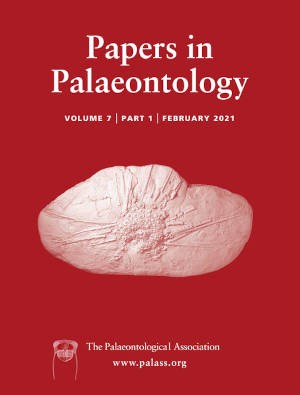Reg. Charity No. 1168330

Tashtykia primaeva gen. et sp. nov. and Tagaria antiqua gen. et sp. nov. (Multituberculata incertae sedis) are described based on isolated teeth from the Middle Jurassic (Bathonian) Itat Formation from the Berezovsk coal mine in Krasnoyarsk Territory, Western Siberia, Russia. Tashtykia primaeva gen. et sp. nov. is characterized by a P5 with three rows of cusps (cusp formula 2B:4M:6L) and a high sectorial p4 with two triangular lobes, five serrations associated with labial and lingual ridges, and a unique distal cusp. Tagaria antiqua gen. et sp. nov. differs from all other multituberculates by a very long P5 with flat crown and many cusps arranged in three rows (4B:6M:7L). Morphologically the teeth of Kermackodon and Megaconus are transitional between Euharamiyida and Middle Jurassic Multituberculata. Kermackodon shares several characteristics with Euharamiyida, such as pointed cusps on the molars connected by longitudinal ridges, a distolabial cusp on the M2 that is higher than the other cusps, and a single large sectorial premolar (p4) with a distal basin. The euharamiyidan characters of Megaconus are an ultimate upper premolar with a shorter lingual side, a p4 with a distal basin, and one cusp on the molars being larger than the other cusps. In addition, Megaconus shares an ultimate upper premolar with three rows of cusps, horizontal wear on the molars, and pyramidal cusps on the molars separated by transverse grooves with multituberculates. The multituberculate characters of Kermackodon include horizontal rather than basined wear on the surface of the molars and serrations on the p4.